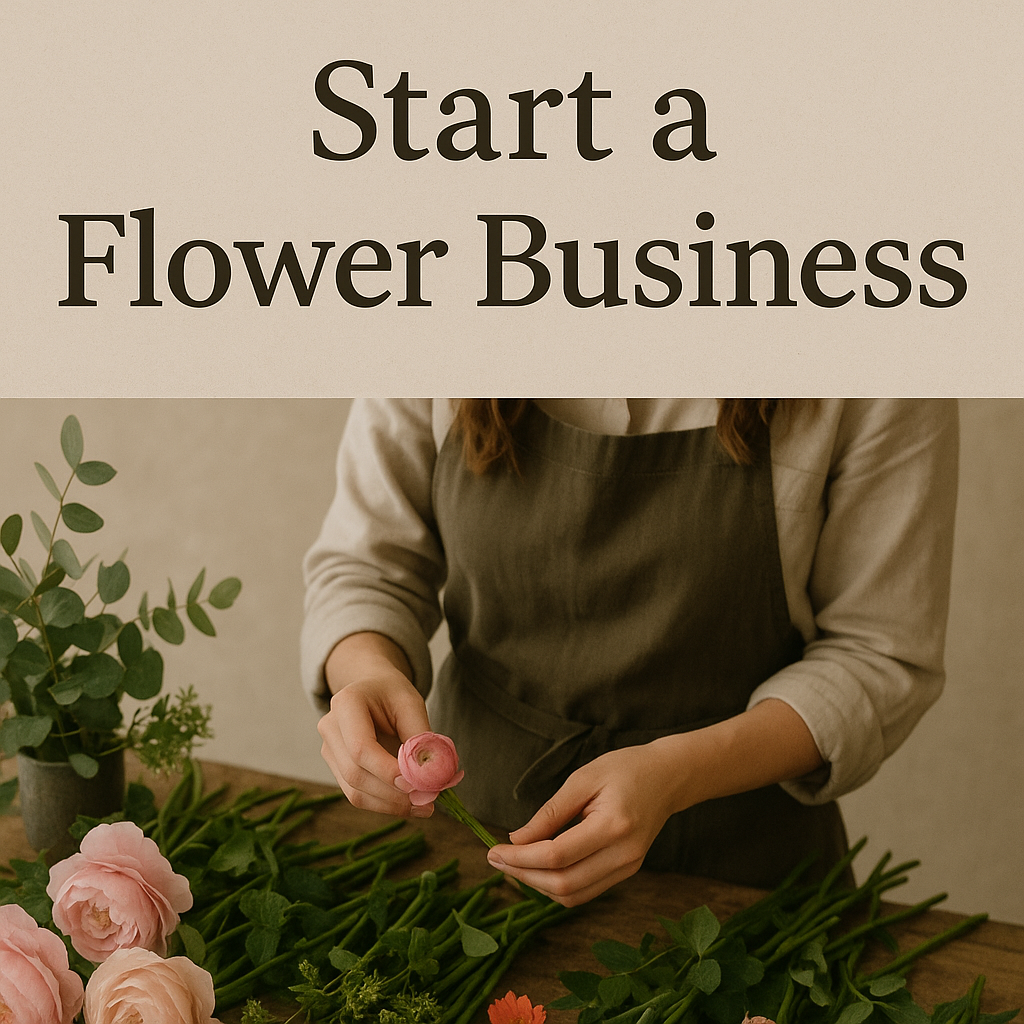The floral industry is blossoming, with U.S. cut flower sales growing by $90 million in just five years. Analysts predict the market will reach $8.6 billion by 2027, fueled by a 4.1% annual growth rate. This expansion reflects shifting consumer habits—today’s purchases celebrate everyday wins, from birthdays to promotions, not just romantic milestones.
Modern floral ventures thrive on creativity and connection. Nearly 40% of daily orders commemorate personal achievements, while 80% of buyers are women purchasing for other women. Social media platforms like Instagram amplify demand, as vibrant arrangements become centerpieces for shareable moments. This trend creates fresh opportunities for entrepreneurs to blend artistry with commerce.
Whether you’re a design enthusiast or retail pro, the industry offers multiple paths to success. Some focus on bespoke arrangements for special events, while others build subscription models for recurring revenue. Your unique perspective could fill gaps in local markets or introduce innovative gifting concepts.
This guide explores practical strategies for launching a thriving floral venture. You’ll learn to analyze market trends, source quality blooms, and price products profitably. We’ll also cover digital marketing tactics to help your creations stand out in a crowded, visually-driven marketplace.
Key Takeaways
- The floral industry is projected to grow to $8.6 billion by 2027
- Everyday occasions drive 40% of purchases, expanding beyond traditional events
- Social media platforms create new opportunities for visual product promotion
- Multiple entry points exist, from design expertise to retail operations
- Women make up 80% of floral purchasers, often buying for other women
- Successful ventures combine creative vision with strategic pricing
Understanding the Floral Industry Landscape
Social platforms now bloom with floral inspiration, reshaping how consumers engage with botanical designs. This digital shift fuels market growth, with U.S. cut flower sales jumping $90 million since 2017. Analysts project steady 4.1% annual expansion through 2027, creating fertile ground for innovative ventures.
Market Trends & Growth Opportunities
Birthdays now drive 40% of daily transactions, outpacing traditional romantic occasions. Commercial contracts prove equally vital—hotels and restaurants increasingly source fresh arrangements to elevate customer experiences. One study shows businesses using floral décor report 30% higher satisfaction ratings.
Emerging niches offer fresh revenue streams. Monthly corporate subscriptions provide predictable income, while eco-conscious buyers seek locally-grown options. Designers crafting Instagram-ready arrangements often see 50% higher price points for photogenic bouquets.
Target Market Analysis & Seasonal Dynamics
Women purchasing for other women dominate 80% of sales, creating opportunities for empowerment-focused branding. Seasonal spikes demand smart planning—Valentine’s Day alone accounts for 25% of annual revenue for many florists.
Geographic reach expands through online delivery services. Entrepreneurs now serve customers 300+ miles beyond their studios by partnering with reliable shipping networks. This strategy helps balance seasonal lulls with year-round gifting demand.
Finding Your Niche in the Flower Business
Standing out in the botanical marketplace requires strategic differentiation. While traditional shops remain popular, modern entrepreneurs thrive by solving specific customer needs through specialized services.
Creative Pathways to Floral Success
Event-focused models generate excitement and premium pricing. Collaborating with wedding planners and corporate organizers allows designers to craft immersive experiences. Exotic orchids for destination celebrations or towering centerpieces for galas often command 50-70% profit margins.
Educational ventures tap into growing DIY trends. Hands-on workshops teaching succulent terrarium designs or seasonal wreath-making attract hobbyists and team-building groups. These sessions frequently lead to recurring revenue through advanced classes and supply sales.
Seasonal specialists maximize profitability during high-demand periods. Holiday décor installations for hotels or graduation bouquet pop-ups near campuses create focused income bursts. Many florists pair this approach with year-round corporate accounts for balance.
Hybrid models combine multiple strengths. A studio might offer weekly office arrangements for businesses while hosting monthly floral cocktail nights. This strategy diversifies income while building brand recognition across customer groups.
How to start a flower business: Essential Steps
Launching a successful floral venture begins with strategic groundwork. Clear documentation and compliance form the bedrock of sustainable growth. Let’s explore two critical components that shape your enterprise’s foundation.
Crafting a Comprehensive Business Plan
Effective strategies start with market intelligence. Analyze local demand patterns and competitor pricing to position your offerings. Identify whether your primary clients will be brides, corporate offices, or everyday gift-givers.
Financial projections require precision. Factor in perishable inventory costs and seasonal demand swings. Many florists allocate 15-20% of their budget to refrigeration and transport solutions.
| Business Structure | Liability Protection | Tax Flexibility |
|---|---|---|
| LLC | Personal assets shielded | Pass-through taxation |
| Corporation | Strongest protection | Double taxation |
| Partnership | Shared liability | Joint filings |
Legal Registration and Permitting Essentials
Compliance varies across state lines. California requires nursery stock licenses for growers, while Texas mandates floral service registration. The SBA’s online portal simplifies federal tax ID applications.
Make sure to secure proper zoning approvals if operating from home. Many municipalities restrict commercial activities in residential areas. Partnering with legal professionals can prevent costly oversights.
Establishing measurable goals keeps operations focused. Track progress through metrics like customer retention rates and bouquet profit margins. Regular plan reviews ensure alignment with market shifts.
Building a Profitable Pricing and Marketing Strategy
Smart pricing meets strategic promotion in successful floral ventures. Tools like EveryStem help balance costs and profits by tracking real-time bloom prices and supplier rates. This precision prevents overspending—critical when 60% of startup budgets go toward perishable inventory.
Leveraging Social Media and SEO Tactics
Visual platforms drive discovery. Instagram Stories showcasing bouquet customization options convert 30% faster than static posts. Pair eye-catching content with local SEO: “Same-day flower delivery Chicago” searches have surged 45% year-over-year.
“Content marketing creates 3x more leads than traditional ads,” notes a 2023 retail tech report. Yet 80% of florists neglect blog posts about care tips or arrangement tutorials—untapped territory for organic growth.
Diverse Income Streams and Upselling Opportunities
Weekday revenue stabilizes seasonal peaks. Contracts with wedding venues and corporate offices ensure consistent orders. One boutique florist increased annual revenue by 40% through hotel lobby installations.
Complementary products like scented candles or artisanal vases boost average order values by 22%. Bundled offerings also enhance gifting experiences—a win for customers and margins.
Exceptional service fuels referrals. A single impressed client typically shares their experience with nine others. Prioritize memorable unboxing moments and handwritten notes to spark organic advocacy.
Choosing the Right Location and Business Model
Selecting the optimal base for your floral enterprise shapes daily operations and long-term growth. Three primary models dominate the industry—each with distinct advantages and trade-offs.
Home-Based Versus Retail and Studio Options
Operating from residential spaces eliminates rental fees and offers schedule flexibility. Many designers begin here, using spare rooms or garages as creative hubs. Professional boundaries prove crucial—designate specific zones for work to prevent burnout.
Studio spaces provide physical separation between personal and professional life. Lease terms often require 12-24 month commitments, so negotiate clauses for early termination or expansion. Location matters: aim for areas within 30 minutes of suppliers and event venues.
Brick-and-mortar shops demand higher investment but increase visibility. These spaces need staff coverage during peak hours and ADA-compliant layouts. Retail locations work best near complementary businesses like gift stores or cafes.
| Model | Startup Cost | Monthly Overhead | Flexibility |
|---|---|---|---|
| Home-Based | $2K-$5K | $200-$500 | High |
| Studio | $8K-$15K | $1K-$3K | Moderate |
| Retail Shop | $25K+ | $4K-$7K | Low |
Assessing Rental, Operational, and Setup Costs
Commercial leases include hidden expenses like common area fees and property taxes. Always budget 15% extra for unexpected repairs or utility spikes. Studios often require refrigeration units—a $3K-$8K upfront cost.
Smart space planning boosts efficiency. Arrange workstations in linear paths: receiving coolers near delivery doors, design tables central, and finished products staged near shipping areas. This workflow reduces steps by 40% in many operations.
“We transitioned from home to studio after 18 months—reinvested profits instead of taking loans.”
Consider hybrid approaches. Some florists split operations between home workshops and pop-up market stalls. This balances cost control with brand exposure during peak seasons.
Sourcing Quality Flowers and Managing Suppliers
Your venture’s success grows from its roots—reliable suppliers and fresh blooms. Smart partnerships with growers and wholesalers keep arrangements vibrant while protecting profit margins. Local farms offer hyper-seasonal peonies or dahlias, while import networks provide tropical varieties year-round.
Building Trust With Growers
Visiting regional flower farms creates transparency. You’ll see growing practices firsthand and negotiate better pricing. Many suppliers prioritize florists who commit to weekly orders, often reserving premium stems for loyal clients.
Blend domestic and international sources wisely. California-grown roses might supplement Ecuadorian imports during Valentine’s demand spikes. This strategy ensures variety without overloading storage coolers.
“Our farm gives preferred clients first dibs on new hybrid varieties—it’s a win-win.”
Freshness Protocols & Eco-Conscious Choices
Florists inspect each delivery for bent stems or discolored petals. Implement a 3-step check: unboxing, hydration monitoring, and pre-sale conditioning. Proper refrigeration at 34-38°F extends vase life by 40%.
Eco-certified suppliers attract conscious buyers. Over 60% of customers pay premiums for sustainably grown orchids or chemical-free wildflowers. Market these partnerships in your branding—it justifies higher price points.
| Supplier Type | Delivery Frequency | Average Cost Savings |
|---|---|---|
| Local Farms | 2-3x weekly | 12-18% |
| Import Wholesalers | Weekly | 8-12% |
| Hybrid Model | Custom | 15-20% |
Implementing Smart Technology and Tools
Modern floristry thrives at the intersection of artistry and digital precision. Specialized software now handles complex calculations, letting designers focus on creative expression while maintaining healthy margins. These tools also streamline operations from order intake to delivery coordination.
Florist Software: Your Pricing Guardian
Platforms like EveryStem eliminate guesswork with real-time bloom cost tracking. Built on 18 years of industry data, they automatically calculate labor, materials, and overhead for each arrangement. This prevents emotional pricing—a common pitfall for new designers.
One florist reported 42% fewer pricing errors after implementation. The system flags unprofitable designs before production, acting as a financial safety net. “It’s like having a CFO who speaks flower,” notes EveryStem’s founder.
Mastering Order Logistics
E-commerce platforms simplify launching an online flower shop. Shopify’s drag-and-drop builder creates mobile-friendly storefronts in hours. Integrated calendars prevent overbooking during peak seasons like Valentine’s Day.
| Tool | Key Feature | Impact |
|---|---|---|
| Florist POS | Inventory alerts | Reduces waste by 35% |
| Delivery Dashboard | Route optimization | Cuts fuel costs by 20% |
| Photo Editor | Background removal | Boosts website conversions 27% |
Timely order management systems sync with your website and social channels. They automatically update customers about delivery windows and floral care tips post-purchase. This builds trust while freeing time for design work.
Smart tools also handle repetitive tasks. Automated reordering of popular roses or seasonal greens ensures freshness without manual checks. Many systems integrate with local growers for real-time stock updates.
Enhancing Customer Experience and Service Excellence
Floral ventures thrive on emotional connections. With 80% of purchases made by women for other women, each transaction carries deeper meaning than simple product exchange. These gestures celebrate promotions, friendships, and personal milestones—opportunities to build lasting relationships.
Fostering Loyalty and Word-of-Mouth Referrals
Every interaction becomes marketing. Satisfied clients share experiences with nine people on average, making service quality your best growth engine. Train teams to listen for unspoken needs—a customer mentioning her friend’s promotion might appreciate upgrade suggestions.
Memorable touches spark loyalty. Handwritten notes tucked into anniversary bouquets or surprise bloom replacements for damaged orders create stories worth repeating. One florist gained 23 corporate accounts after a client shared their VIP treatment on LinkedIn.
Special occasions demand extra care. Designers who ask “What feeling should this arrangement convey?” craft pieces that resonate emotionally. This approach turns first-time buyers into repeat clients—60% return for future celebrations when their vision gets executed perfectly.
Track satisfaction through simple follow-ups. A quick text checking if Grandma loved her birthday flowers builds trust while gathering feedback. These micro-interactions keep your business top-of-mind for life’s next meaningful moment.







